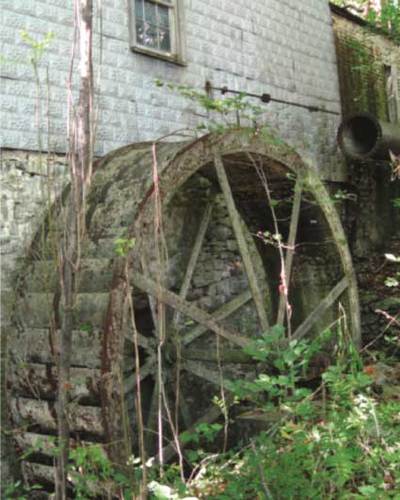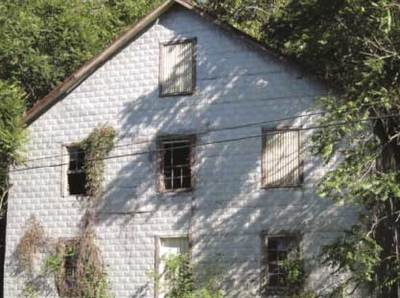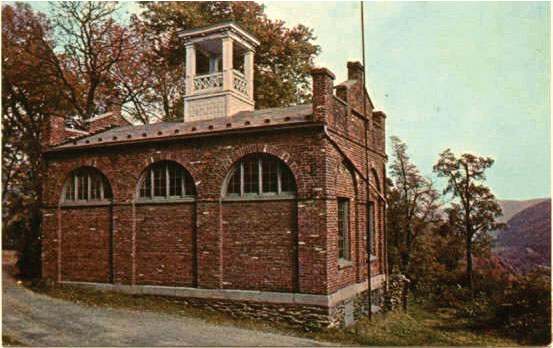|
Harpers Ferry, Jefferson County
Date of Construction: 1884 Threat: Deterioration, Pests March 2019 Update: The Harpers Ferry Foundation is looking forward to several hands-on projects in the spring and summer 2019 while fundraising for a new roof. In the past six months, the volunteer group have created a handsome new display case sign for the building and cleaned the sanctuary of biohazards (pigeon droppings). 2017: The First Zion Baptist Church is a contributing building in the Harpers Ferry Historic District. It is located on West Ridge Street behind the Harpers Ferry Town Hall. The church’s African-American congregation built the church, which was a keystone meeting place for the community that developed around Strorer College (a historically black college). The church was not only used for worship but was also an educational facility and gathering place over the years. After the U.S. Supreme Court decision, Brown v. The Board of Education, the West Virginia Legislature stopped funding Storer College and shifted state funds to other West Virginia historically black colleges and universities. This defunding made it impossible for the college to stay open. With the closure of Storer College in 1956, the black community in Harpers Ferry began to dwindle, as did the church congregation. The church held its last function in 2009 – an interfaith revival. Since then it has sat abandoned, under-used, and neglected. The building is structurally sound although it is increasingly exposed to the elements and continues to deteriorate. In February 2017, the Harpers Ferry-Bolivar Historic Town Foundation purchased the building with hopes to preserve its historical significance while re-using the structure as a secular community cultural center that celebrates the African-American heritage of the area. The Town Foundation needs immediate help fundraising for the preservation of the structure. If you are interested in donating to the cause, visit http://www.historicharpersferry.com/index_eecms.php/first-zion-baptist-church. Bullskin Run, Jefferson County
Date of Construction: before 1800 Threat: Deterioration; Pests 2017 Update: No updates have been made available to PAWV in 2017. As of the last update provided to PAWV in 2016, Feagans’ Mill applied for a National Register of Historic Places designation in September/October 2016. The status of the nomination is currently pending. The owner of the mill, Daniel Lutz, is in the process of preparing for a timber felling project to clear the close-growing timber, which could threaten the mill in the event of a storm. His 2017 fundraising plans include sales of Feagans’ Mill flours, meals, etc, at local events; offering mill memorabilia (bolo ties, feed sacks, etc.); and creating a “Friends of the Feagans’ Mill at Wheatland Village” organization. 2014: The original mill at the site was built by the Haines family between 1757 and 1760 and was the first of eight mills built on the South Fork of Bullskin Run prior to 1800. That mill was burnt to the ground by Union forces during the Civil War. It was rebuilt between 1868 and 1870 by Isaac Feagans and operated by the Feagans family until 1937, when it burned again, only to be rebuilt and operated until 1943, when it ceased operation. From 1943-2010, little upkeep had been done of the mill and it fell into a state of disrepair with pests infiltrating much of the building. Acquired by the present owner in 2010, it is the last complete, intact, and operable grist mill in Jefferson County and can be found in a largely agricultural area surrounded by historical houses and farms, all of which predate 1880. The current owner is making strides to rehabilitate the property by removing most of the accumulated refuse from the inside and the overgrowth of brush from the exterior. The owner’s goal is a full restoration of the site with functioning historical mill, creamery, and ancillary businesses for a heritage tourism destination. There has been some difficulty in moving forward with the project, however, primarily related to zoning and engineering regulation concerns. Charles Town, Jefferson County March 2019 Update: Restoration of the brick smokehouse and stone kitchen began in November. It was paused for the winter but will begin again in March/April and will be completed before summer. Last summer, restoration of the roofs on the main house was completed. The standing seam metal roof on the central portion of the house was restored, and new gutters and downspouts installed. The standing seam metal roofs on the two wings were replaced with new standing seam metal roofs. New gutters and downspouts were installed. 2017 Update: There has been quite a bit of activity at Happy Retreat since the last update. The Jefferson County Historical Society moved its office to Happy Retreat; the Historic Structure Report (HSR) was completed; and Friends of Happy Retreat (FOHR) hosted a few events at the site --a Wine and Jazz Festival and a book club. The Historic Structure Report has given insight into the history of the construction and use of Happy Retreat. The HSR included a paint analysis that helped reveal the age of construction of the west wing of the house and a Preliminary Structural Assessment of the outlying building. Due to the lack of original wood floors and floor joists in the first and second story, dendrochronology could not be used to determine the age of construction of the house’s west wing. Therefore, a paint analysis was implanted to help date construction. Using a technique known as cross-section microscopy, small samples of paint were examined microscopically to determine the number of paint layers and their colors. In one room, the analysis revealed a complete chronology of the paint colors used back to the day Charles Washington first entered the house. Paint analysis also helped date the door and window of the west wing as well as reveal that the current mantel had been moved from another location. The Preliminary Structural Assessment of the brick smokehouse, stone kitchen and privy outbuilding determined that that the smokehouse is in good structural condition, but it will need repointing and replacement of damaged bricks. The kitchen and privy however, require some work. The brick kitchen and privy walls will need to be rebuilt. The shingles on the outbuilding will also need to be replaced as they contain asbestos. As far as events hosted at Happy Retreat, FOHR successfully hosted a Wine and Jazz Festival on June 10, 2017 with over 500 people in attendance. The festival included three Jazz bands, over 50 different local and national wines, and food from local restaurants and bakery. All proceeds went to the restoration and maintenance of the site. A book club, with free membership, was also started in June 2017. On September 9, 2017, FOHR will host their second Craft Beer and Music Festival at Happy Retreat. 2010: Charles Washington, who founded Charles Town in 1786, began constructing his Early Classical Revival mansion, Happy Retreat, in 1780. Nearby at least seven other homes were constructed by Washington family members, including Charles’ brother George, who frequently visited Happy Retreat. The threat to Happy Retreat arose several years ago when the owners expressed their desire to sell the home and its 12.2 developable acres. Two other Washington family homes had just been lost to development, so the threat was all too real. To stave off a sale, the grassroots Friends of Happy Retreat began raising funds to keep the property under option. After four years, however, the group realized that it would be impossible for them to raise enough private funds to acquire and sustain it for public enjoyment. So the nonprofit is now seeking public partners to join them in a new initiative: to develop Charles Washington’s Happy Retreat into the centerpiece of heritage tourism in Charles Town.
Harpers Ferry Area, Jefferson County
State preservationists got some good news last fall with the announcement that the entire 99-acre Murphy Farm at Harpers Ferry would be purchased by the nonprofit Trust for Public Land on behalf of the Harpers Ferry National Historical Park. This critical purchase rescued the Murphy Farm, site of the climactic 1862 Confederate attack and capture of Harpers Ferry, from being developed into a 188-house residential subdivision. In 1895-1910, the farm served as the location of the Harpers Ferry engine house that abolitionist leader John Brown used in his abortive 1859 attempt to spark a slave uprising. The Brown fort was sent to Chicago for the 1893 Columbian Exposition, and, upon its return, Alexander Murphy deeded five acres to rebuild the structure on his farm. In 1906 W.E.B. DuBois and other leaders of the Niagara Movement, a predecessor of the NAACP, "made a barefoot pilgrimage" across the farm to the engine house. The engine house was later returned and placed within park boundaries near the confluence of the Potomac & Shenandoah rivers. More good news was recently released when the National Park Service announced that it is adding the farm property to existing park acreage, thus guaranteeing its preservation for future generations. Murphy Farm is saved! |
Endangered Properties ListIf you are interested in assisting with any of these preservation projects, contact the Preservation Alliance of West Virginia at [email protected].
Categories
All
Archives
March 2024
|
Get Involved |
Programs |
Contact UsPreservation Alliance of West Virginia
421 Davis Avenue, #4 | Elkins, WV 26241 Email: [email protected] Phone: 304-345-6005 |
Organizational Partners:
© COPYRIGHT 2022 - PRESERVATION ALLIANCE OF WEST VIRGINIA. ALL RIGHTS RESERVED.











 RSS Feed
RSS Feed



